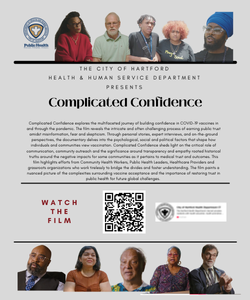By S. E. Smith
Abby Schindler, an autistic researcher in the Chicago suburbs, found that remote work came with positives, such as being able to manage sensory issues, as well as negatives: “As someone who struggles to build social relationships, working from home gets very, very lonely and hard.”
According to the Congressional Research Service, the unemployment rate in the United States hit 14.8% in April 2020, the highest since 1948—the first year in which this data was collected. By July of 2021, the unemployment rate had bounced back to 5.4%, still higher than February 2020, but an astounding recovery after being gripped in a pandemic-fueled economic crisis. A surprising population of workers had even more explosive employment growth: disabled people, who achieved a labor force participation rate higher than it was pre-pandemic. Given that the pandemic has driven an increase in disability due to long COVID, which affects as many as one in seven people in the U.S., exploring the reasons why is critically important.
The popular explanation for the bump in employment was that the rapid transition to remote work across the country opened up new opportunities for disabled workers. But the truth is more complicated: Remote work is not a solution for everyone, for a variety of reasons. Furthermore, the availability of remote work should not be used to force disabled people out of the physical workplace.
During the height of the pandemic, society briefly chose collective practice to protect each other. One standout example was remote work, which acted as a form of mass accommodation that benefited all employees, without forcing individuals to ask for it workplace by workplace. However, the ongoing conversation about how the nature of work has changed for everyone, including disabled people, may be putting too much emphasis on working from home. The conversation also tends to focus on one group of workers: those in professions that allow for remote work, while closing the discussion to much larger structural reforms.
“Employers may have become more open to hiring people with disabilities because … there was the Great Resignation that accompanied the pandemic and lots of people dropped out of the labor market,” says John O’Neill, Ph.D., director of the Center for Employment and Disability Research. O’Neill is hesitant to attribute the rise in disability employment to a singular factor and points to improvements in hiring practices, as well as more flexible working conditions, such as job sharing, a practice that allows several workers to share a single full-time role.
Remote work certainly was transformative for some disabled workers, such as Fiona Kennedy, an operations manager for a construction consulting firm, who says “remote work saved my life.” However, the truth is relatively few disabled people benefited from remote work.
There are two important reasons for this. One is flexible scheduling and better leave options: In a 2022 study examining the rapid shift to remote work, researcher Jennifer Bennett Shinall found that “disabled workers report far less access to these pandemic-relevant accommodations than do nondisabled workers.” The other is occupational segregation, in which participation in certain careers and sectors of the economy is heavily mediated by race and/or disability status. For instance, the stereotype that janitors are Latinx and executives are white is rooted in reality—and while executives can work from home, janitors cannot.
What the pandemic highlighted wasn’t just the benefits of remote work, but the need to move away from an individual, rights-based model of disability in the workplace to a larger cultural, social model, a conversation that will benefit a much larger swath of workers as well as society as a whole.
Equitable Not Equal
Under the Americans with Disabilities Act of 1990 (ADA), which built on earlier legislation and policy, including the Rehabilitation Act of 1973, disabled people are protected from discrimination, including at work. The ADA reflected a larger societal shift away from the charity model, in which disabled people were viewed as objects of pity, to one of broader social inclusion in which they were entitled to access to society.
“If there’s an event that affects everyone and there’s a solution that might address it in a way that preserves health and well-being, why not provide a mass accommodation relying on the infrastructure and process usually created on an individual basis and allow everyone to do what they do from home to the extent it’s possible?” says Shirley Lin, an assistant professor of law at Brooklyn Law School. “For teaching, that turned out to be absolutely possible, particularly teaching adults in a legal education setting.”
Lin’s work focuses on DisCrit, work that lies at the intersection of disability studies and critical race theory, and she’s very interested in how the pandemic illustrated that it was possible to move away from a “liberal individualized model where you are responsible for your own safety and security by showing up to work” to a more collective, social one. In Lin’s view, this “mass accommodation” allowed a huge percentage of the workforce to pivot overnight, accessing a tool disabled workers had been promoting for decades.
“The experience of having isolation and needing to innovate quickly to preserve health and well-being through policies that acknowledge interdependence to me was a huge potential cultural shift,” she says.
In ordinary conditions, workplace accommodations take place through an individual “interactive process” that is supposed to include bargaining in good faith and negotiation on both sides, but ultimately leaves workers on their own. Prior to the pandemic, disabled workers who needed hybrid or remote work struggled to access that accommodation. And when emergency declarations expired, those mass accommodations ended as well.
“After a tooth-and-nail accommodations/disability discrimination fight with my employer that resulted in union, news, and federal civil rights agency intervention, I won the right to keep my remote work accommodations,” says Heather Ringo, a graduate student and teacher. Unfortunately, the same is not true for many other disabled people, who were forced back into the workplace as shelter-in-place orders expired.
But those employment protections aren’t available to gig workers, freelancers, and those in smaller workplaces. An Uber driver with kidney disease who needs dependable restroom access is expected to manage it for themselves, for example, just as a freelance journalist who needs assistive technology to write needs to purchase their own equipment.
Meanwhile, accommodations ranging from a safe, clean space to take injectable insulin to seating in retail spaces can be a struggle for low-wage workers, many of whom must work in person. During the pandemic, these workers had to fight for even the most basic personal protective equipment, even as companies patted themselves on the back for offering various forms of hazard pay (many of which were rolled back).
The Pandemic Work Rebellion
Workers and bosses alike learned an important lesson during the pandemic: Workers have the power to shape their environments. The rapid spike in quit rates as the country opened back up highlighted the fact that more workers were willing to walk away from their jobs in a growing “anti-work” movement. The aftereffect of this huge shift on the workplace is also apparent in a slew of opinions grousing about how Generation Z simply doesn’t respect the way things should be done.
White-collar workers overall—who are predominantly white, with concentrations over 70% in some fields—found that their relationship to work shifted dramatically when they were able to do it from home, and once they had a taste of freedom, they were reluctant to let it go. The call to return to the office triggered a revolt. In workplaces across the country, workers argued passionately for remote and hybrid options, insisting that the flexible hours of remote work were beneficial for the quality of their work, overall productivity, and happiness.
Across industries, furious snowstorms of internal memos circulated, with workers drawing upon a growing body of research to make the case for remote and hybrid options. Some members of the disability community were also quick to argue that remote work represented a revolutionary accommodation that must be protected now that society recognizes that it’s possible. The financial media, often viewed by executives and upper management as an authority on innovations in business, crowed over how remote work benefited disabled people.
For some disabled people, such as Casey Doherty, this was absolutely true. Doherty, who has illnesses that limit her energy, graduated into the pandemic, and is now struggling to find work. She expresses frustration with alienating job ads (“must be able to lift 10 pounds”), refusals to consider remote work, and the sense that “this is the way things were done,” so it’s the way things should be done forever.
“Why can’t we expand our understanding of what work can be?” she asks, when talking about the career progress enabled by remote and hybrid options. But the question could and should be applied to a larger conversation.
Who Really Benefits From Remote Work?
Researchers in fall 2020 estimated that only 37% of jobs can be performed wholly remotely. However, conversations about the early months of the COVID-19 pandemic tend to erase the presence of the other 63% of jobs, particularly those of “essential workers,” who were ordered to report to in-person jobs: the meat-packers, nurses, transit engineers, grocery store employees, power plant workers, and others who kept critical systems running. At times, it seemed that society at large felt entitled to the labor of these workers.
For those who must perform on-site work, the conversation about remote work can feel frustrating, a scene of privileged workers celebrating much-needed changes while ignoring the army of workers who made those changes possible.
“The fact that in nine out of 10 industries in which there was the highest level of COVID deaths were industries in which Black workers are predominant is incredibly telling, because it rests on this history of racial capitalism in which hard labor, manual labor, labor that is associated often with nonwhite communities …could not be outsourced,” explains Lin. “When essential workers who continued to show up to work during the pandemic physically were celebrated, they actually had their exposure to severe harm and death become the very reason they were deemed essential.”
Lin explains that the explosion in labor organizing during the pandemic highlighted the collective fight of workers, such as those at Amazon fulfillment centers. “Activists are in a position to point to the ways in which life is made better, but for whom,” she says. “There were multiple, basically mass-structural accommodations during COVID that still broke along lines of privilege versus inequality,” where workers with preexisting social and cultural power received more support than historically marginalized ones.
Remote work, or a traditional accommodations process, can’t fix occupational segregation and related disparities. True progress in disability employment requires a societal shift from the way that the law, and our larger culture, currently view disabled workers, toward a world in which society is “not entitled to our deaths,” as disability activist Mia Mingus wrote on her popular blog, Leaving Evidence, in 2022. This necessitates solidarity across cultural and social identities, and across workers. As Lin notes in a forthcoming Emory Law Journal paper, “Rather than letting vulnerable professional staff with [less] access to resources fall through the cracks,” bargaining by unionized Albuquerque teachers benefited students and staff collectively.
The conversation about disability employment needs to track not just jobs, but just jobs: Are disabled people in roles with fair pay, benefits, and opportunities for advancement, or are they pushed into low-status roles? When the distribution across different kinds of jobs is weighted, does remote work really explain the rise in disability employment? And when this conversation excludes the racialized nature of disability and low-wage jobs, is it really representative of the employment landscape as a whole?
The mass accommodations offered during the pandemic provided a glimpse of a world in which disability inclusion is, as Lin notes, folded into the idea of universal design of workplaces. Access to remote work has indisputably changed individual lives, but meaningful solutions lie in shifting the conversation away from one very specific accommodation issue that affects a particular class of workers to disabled workers as a whole, and the deliberate social choices that perpetuate economic and social inequality across race and disability status. Expanding that conversation opens the way to bold solutions, such as ensuring that all jobs are good jobs, dismantling occupational segregation, and promoting collective freedom rather than individual struggle.





